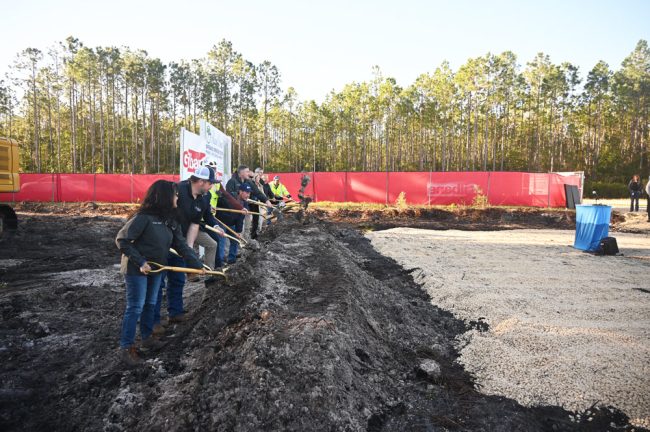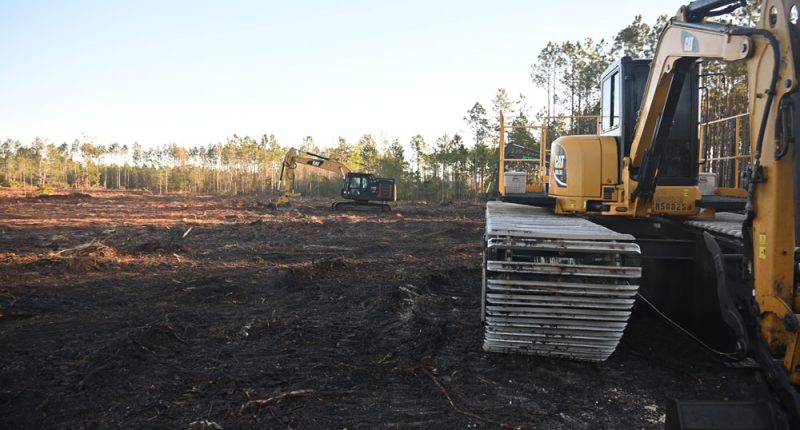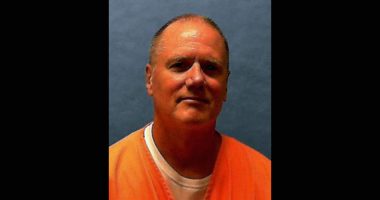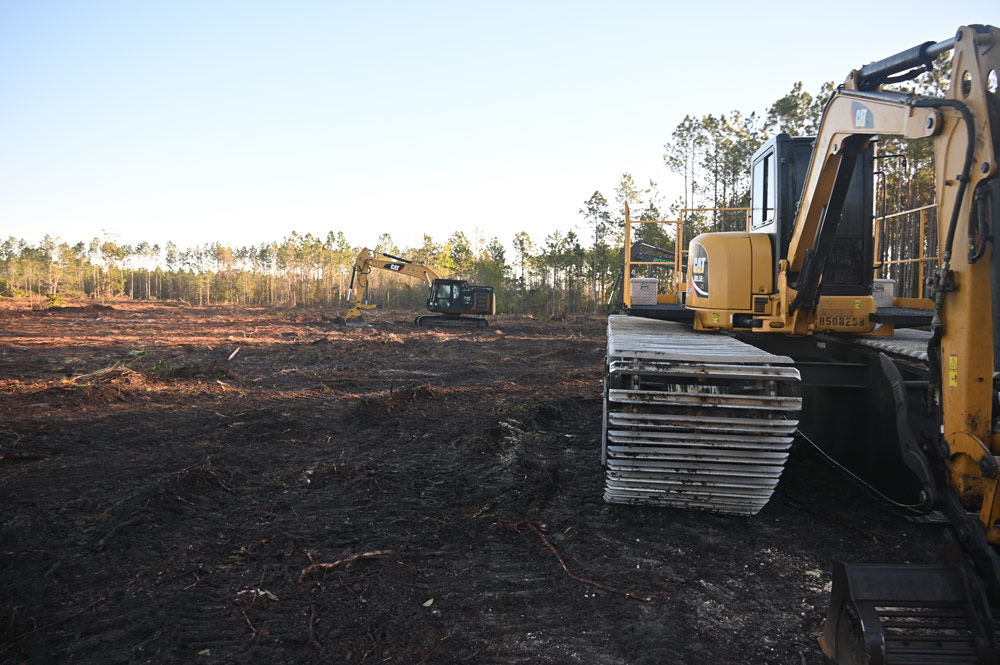
You couldn’t see it. But the mound of dirt public works crews had prepared for city officials and others to break ground on a new public works facility off U.S. 1 this morning was more context than dirt, more history and slog than fill, which is probably why Interim City Manager Lauren Johnston and Public Works Director Mark Macill sounded as if this were the groundbreaking to a theme park. Johnston described the $12 million phase, first of three at the “Maintenance Operations Center,” as an “exciting milestone.”
For city crews–generally the hardest working, least celebrated in the city–it might as well have been. They’ve been waiting for this a very long time, and some of them will not get to benefit from it by the time it’s done in another 10 years or more. Funding the new facility has been a challenge since its inception, and continues to be. The facility is also an easy target for city critics. The invisibility of the facility doesn’t help.
“This is more than just a construction project. It represents a vision coming to life,” Mancill said. So a little context is necessary to understand the magnitude of this morning’s groundbreaking at 240 Peavey Grade, a dirt road off U.S. 1 that leads to the city’s Water Treatment Plant 3.
Nine years ago Nestor Abreu, then Palm Coast’s public works director (he retired in 2019), took all five members of the City Council on a tour of the 10-acre public works hub, an out-of-the-way approximation of a shanty town across Wellfield Grade off U.S. 1. Most residents don’t know it exists. Then-first-year Council member Nick Klufas couldn’t even find it until he got directions, first from the mayor, then from the city manager.
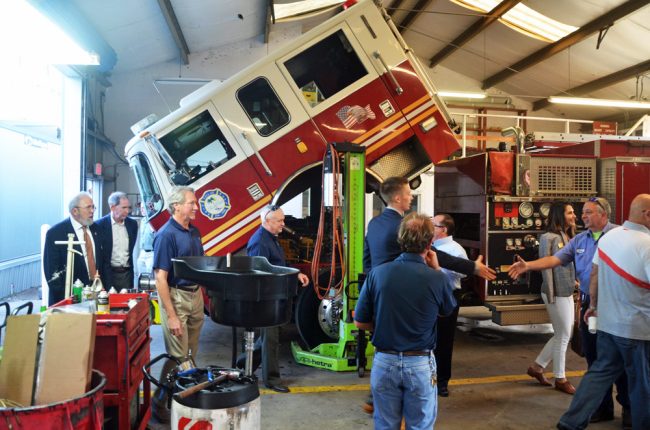
Abreu’s goal was to convince the council that the public works facility had outgrown its location and was in dire need of expansion, or of a move elsewhere. He was also hoping to impress on the new council the essential role of public works. The council needed the briefing. Three of its members, Milissa Holland, Bob Cuff and Klufas, had just been elected. Two others, Heidi Shipley and Steven Nobile, had been elected two years earlier.
Without Public Works, Palm Coast cannot function. It is the city’s nervous system. It’s the repair shop for everything from fire trucks to dump trucks to the heavy equipment that keeps swales and ditches and canals functional. It’s from where city crews who maintain 13 parks and 555 miles of roads and the city’s stormwater system in good repair. It’s where the city’s fleet of hundreds of trucks, mowers backhoes and nearly 1,000 pieces of hand-held equipment are stored.
Since the public works facility is out of sight, and working-class, public works employees don’t generally have the prestige or self-importance of suited up administrative staff with whom council members more easily identify. It takes more to convince councils or the public to spend money on an operation they take for granted. Witness the last few months’ wrangles over raising utility rates in part to upgrade the city’s principal sewer plant. Residents want to be able to flush their toilets, not see where their ousted treasures go.
A week after that morning tour in 2016, the council voted to approve the first step in what was then billed as a $6 million, five-year expansion of the Public Works facility. It approved the master plan that would map the course toward today’s groundbreaking.
It’s been nearly 10 years, and the first phase alone of building the new facility is costing $12 million on what will eventually be a nearly 100-acre site combining public works, stormwater and the administrative offices of the water and sewer utility–the city’s largest single department. That’s what this morning’s groundbreaking was about.
Though this was their doing, none of the former council members were there. Johnston and Mancill recognized them a few times. And only one current council member, Charles Gambaro, was there.
“One of the first things I wanted to do is meet the crew at the Public Works Department,” Gambaro said, recalling the days following his appointment to the council last fall. “Matt gave me a great tour of the facility. What jumped out at me is that we have over 800-plus vehicles to maintain and we had three maintenance bays to do that, and then, a smaller shop for the lawn mower area. To me, and I’ve had experience running large maintenance organizations in the past, it just wasn’t sustainable. How they were doing it, it’s just a testament to our city employees, and I know I’m committed to following this project all the way through. And to me, it’s a no brainer.”
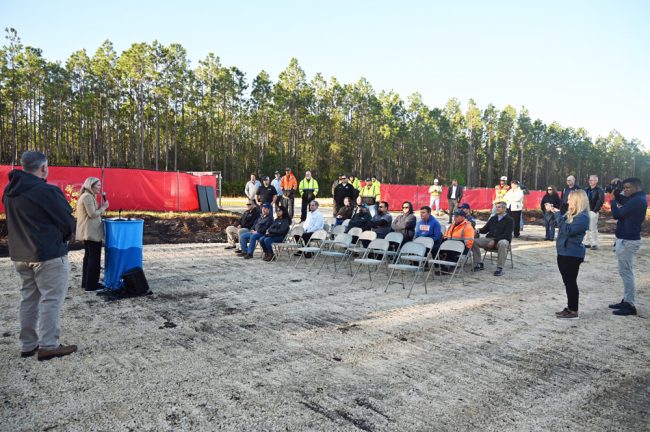
A few weeks ago Gambaro was touring the city’s troubled Waste Water Treatment Plant 1 for the third time, that time with an aide to Sen. Rick Scott as he was hoping to secure federal funds. Gambaro had toured the city in the immediate aftermath of Hurricane Milton, and has developed a particular interest in the city’s infrastructure–its Achille’s heel right now. “For me to make sound decisions when we vote as a council, I want to understand as much detail as I can with these projects, so I am trying to lead from the front,” he said. “I’ve always done that in my career and I just want to thank our team for all the hard work that they do. The last thing anybody wants to do is to vote on something that they really don’t have any idea about.”
One notable city director had been part of the tour in 2016 and was present this morning: Carl Cote, the director of engineering and stormwater. Right now, the construction will consist of a year-long phase of site preparation–the leveling of trees, filling in the grounds with 267,000 cubic yards of dirt (half the total amount of dredged sand the U.S. Army Corps of Engineers dumped on 3.2 miles of shore to renourish the beach in Flagler Beach last summer) to elevate all construction four feet high. The city was able to recycle dirt from its massive London Waterway Project, where it was excavated, saving the city over $2 million. Site work also includes building the underground infrastructure.
Gilbane Construction, a recurring contractor, is building the facility. The cost of future phases has not been determined, Cote said, but it could be 10 years before the facility is completed. The current $12 million phase is being financed through the utility, stormwater, fleet and capital projects fund, with some $2.5 million transferred in the past from the general fund, Cote said. Phase two will see the construction of fleet-maintenance buildings and washing stations.
“The final phases of the project will bring a consolidated operations and administrative facility that houses all of our functions under one roof,” Mancill said. “This new operations center is about more than just buildings, though. It’s about our people. It’s about giving our hard-working employees a modern, safe and efficient work space. It’s about providing them with the resources they need to do their jobs effectively and with pride, and provide our citizens the enhanced services that they need.”
In 2016, then-Council member Steven Nobile had words of caution: “I just want to be careful we don’t come with something that has a very high price tag and takes many years,” he’d said. “It seems essential that we have some changes out there, and we don’t want to say, well, because of the cost of this master plan, it’s going to take us out about six years to complete.”
![]()
